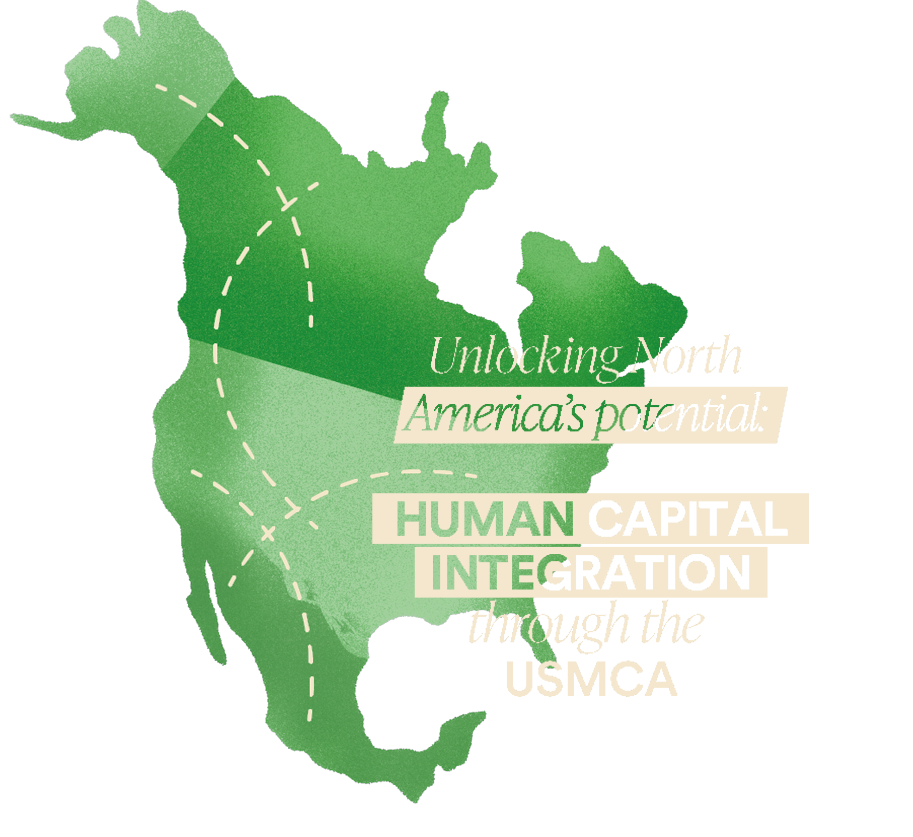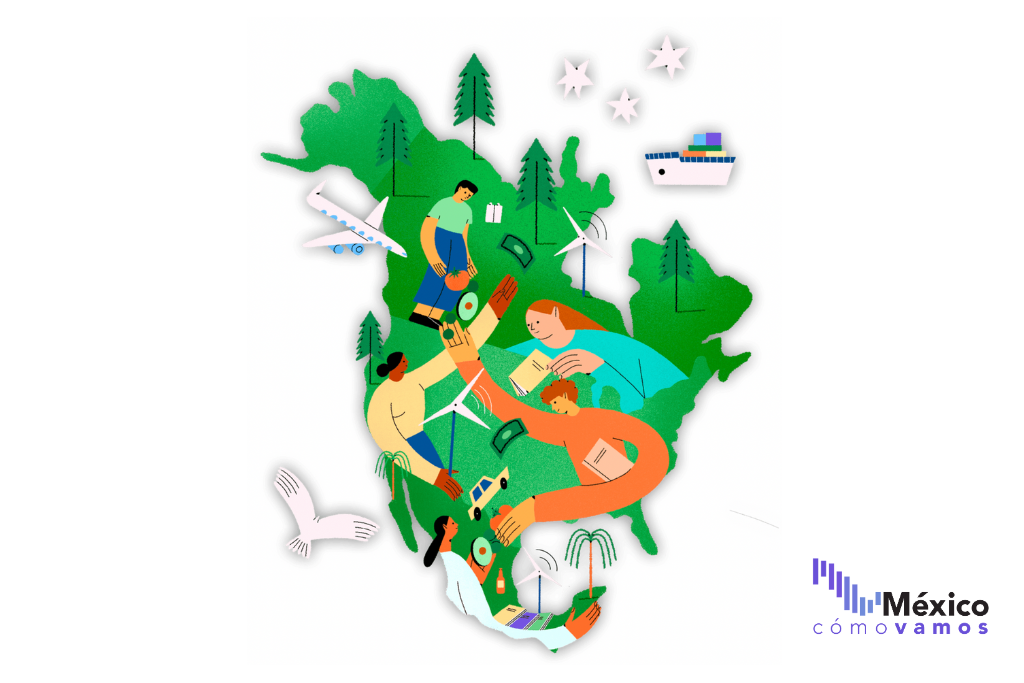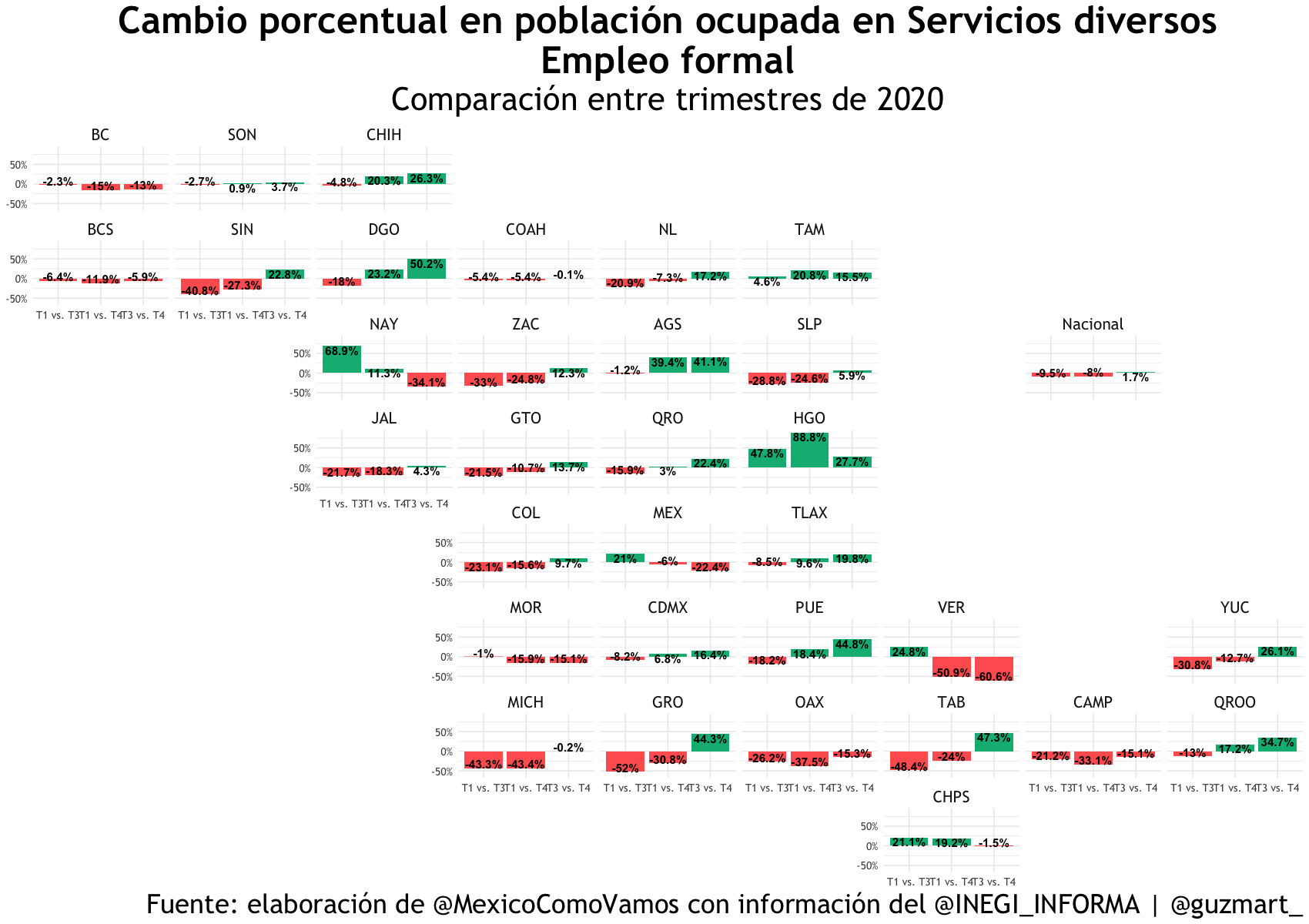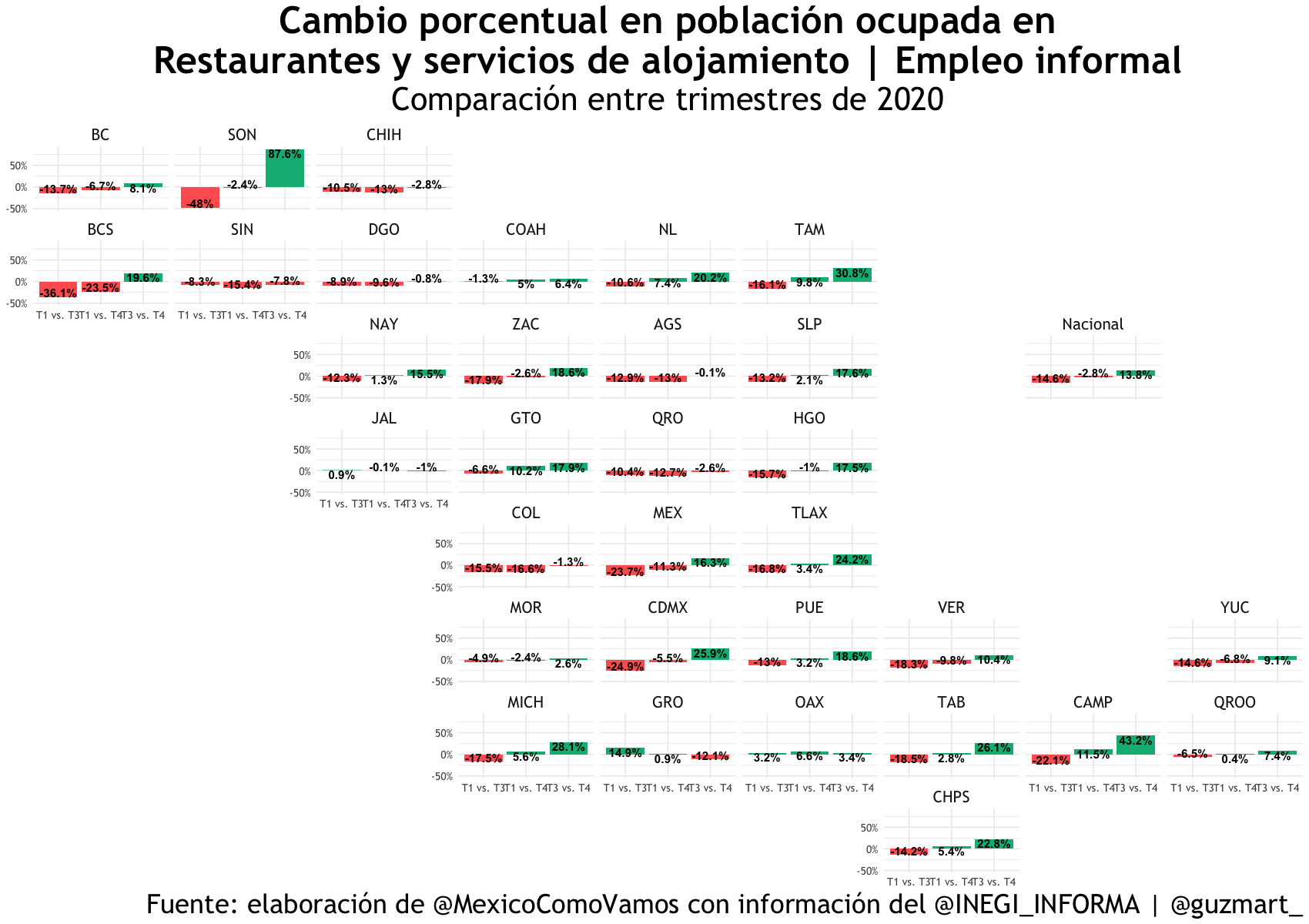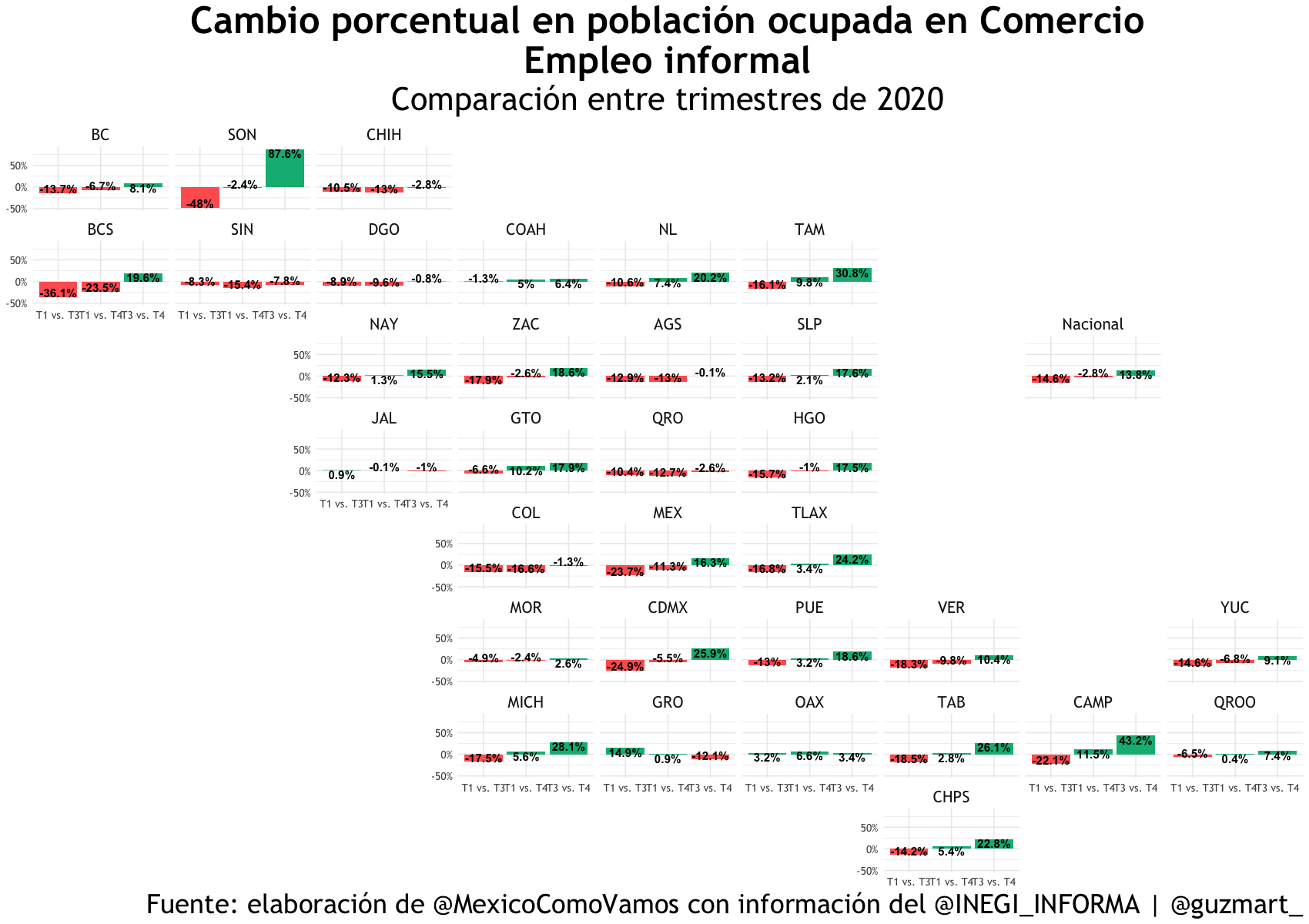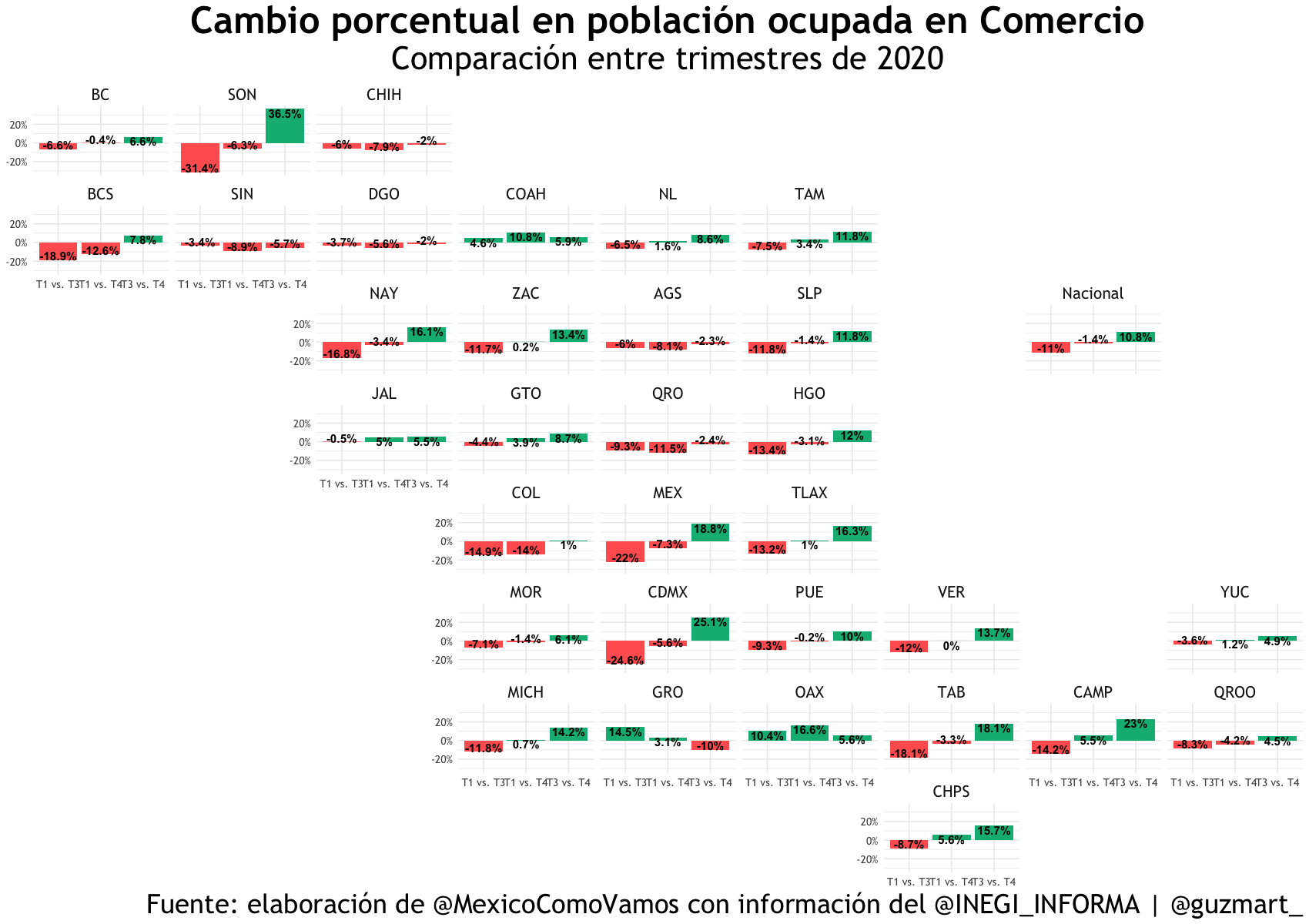What is labor market integration in North America?
The compendium “Unlocking North America’s Potential: Integrating Human Capital through the USMCA” offers a multidisciplinary perspective on the challenges and opportunities for effective integration of the labor market and human capital in the region, with a view towards 2050.
This document is the result of the forum ” Immigration on the Road: Labor Mobility in North America” held on April 17, 2024, in Mexico City. A joint effort by Mexico, ¿cómo vamos?, the Baker Institute Center for the U.S. and Mexico, and Connecting Mexico, which calls on governments, academia, and industry to collaborate in developing the essential skills needed for North America’s economic future.
Check out our latest publication!

Section 1. Labor Mobility in North America

EARL ANTHONY WAYNE
Distinguished Diplomat in Residence, School of International Service, American University; Mexico Institute Board Co-Chair, Wilson Center
@EANTHONYWAYNEAchieving North America’s Labor Market Potential Requires Workforce Investment
To enhance the labor market in North America, it is essential to bridge skill gaps and boost economic competitiveness. The current labor market demands underscore the significance of developing expertise in key sectors, fostering trilateral cooperation, and adapting to technological advancements. A joint agenda aimed at reaching the workforce’s full potential should prioritize ongoing investment and coordination as fundamental pillars for success.

The Integration of Labor Markets in North America and the USMCA
The labor integration between Mexico and the United States stems from historical interdependence driven by U.S. labor demand and Mexico’s labor surplus. The USMCA, particularly Chapter 16, has the potential to regulate this integration by updating the list of professions eligible for the TN visa. This can be achieved through the Temporary Entry Working Group without the need to renegotiate Chapter 16.
.
Section 2. North American Labor Market Integration in the Context of Nearshoring

Brenda Estefan
International Relations Speaker and Consultant, International Political Environment Professor at IPADE, and Reforma newspaper columnist.
@B_EstefanSince the implementation of NAFTA, the increase in migration flows from Mexico to the United States has been driven by economic, political, and social factors. The strict U.S. border security measures contrast with the country’s reliance on Mexican labor. A comprehensive and balanced approach between both countries will be key to effective migration management.

People’s Mobility for Skill Acquisition: Micro-courses, Multiculturalism, and a Changing Job Market
Text prepared by the author based on Hazel Blackmore’s participation in the Forum “Immigration on the Road: Labor Mobility in North America.”
Student mobility is the foundation for cultural exchange and the development of citizenship with shared civic values. To achieve this, we must move beyond traditional student mobility schemes and offer short courses, specific skills training, and educational flexibility. This approach benefits students, professionals, technicians, and experienced workers who seek to add new skills and capabilities to their careers. To take advantage of nearshoring and regional integration, it is recommended to implement microcourses, trilateral recognition of certifications, and teacher training programs.

Luz María de la Mora
Director, Division of International Trade and Commodities at UNCTAD
@luzmadelamoraTalent in North America: A Competitive Edge
The USMCA, successor to NAFTA, addresses regional competitiveness through labor regulations in Chapter 23 and facilitates temporary business entry in Chapter 16. However, the trilateral agreement does not truly establish an integrated labor market or free movement of workers, as seen in the European Union, which presents an opportunity for the region. Labor mobility frameworks that promote innovation and sustainable growth will be key to regional competitiveness in the future.

Labor Integration in North America: Catalyzing Regional Competitiveness
North America aims to position itself as the most competitive region by 2050, surpassing Asia and Europe. Therefore, labor mobility and economic integration, bolstered by the USMCA, are crucial. The region has advantages, such as favorable demographics, technological innovation, and an integrated energy market. Leveraging our competitive advantages requires measures that promote the orderly exchange of talent through visas and certifications

RUBÉN SANCHEZ
Researcher Scholar, Education with Equity and Quality Initiative of the School of Government and Public Transformation at Tecnológico de Monterrey.
@rubensanchez597
Laura Noemi Herrera Ortiz
Research Scholar, Education with Equity and Quality Initiative of the School of Government and Public Transformation at Tecnológico de Monterrey; Associate Researcher, México Evalúa.

Marco A. Fernández Martinez
Professor and Researcher, School of Government and Public Transformation at Tecnológico de Monterrey; Associate Researcher, México Evalúa; Coordinator, Education with Equity and Quality Initiative.
@marco_fdezmNearshoring has sparked an industrial revolution in sectors such as automotive, aerospace, and electronics, increasing the demand for specialized talent and creating opportunities for young people in secondary and higher education. To ensure that education adapts to the labor market needs, it is crucial to promote key skills and encourage collaboration among relevant stakeholders. This approach will prepare young individuals and help bridge educational and employment gaps.
Section 3. Dynamics in Labor Integration: Increasing the Use of TN Visas for Mexicans

Nuty Cárdenas Alaminos
Professor and Head Research Scholar, Division of International Studies at CIDE
@NutyCardenasChallenges of Labor Mobility in North America under TN Visas
Despite the exponential growth in the use of TN visas since the removal of certain requirements in 2004, significant barriers still hinder their full utilization. These barriers include a lack of information on the application process and eligibility, high certification costs, and discrepancies in job qualification requirements, even with the facilitations provided to Mexicans and Canadians. To improve the effectiveness of these visas, greater government oversight and the harmonization of certifications and degrees is necessary.

Karen Torres
Incidence and Institutional Development Coordinator, México, ¿cómo vamos?
ANAIBELCA GAMA RIVAS
Text prepared by the author based on Anaibelca Gama Rivas’s participation in the Forum “Immigration on the Road: Labor Mobility in North America.”
The lack of awareness about TN visas calls for an intensive promotional strategy regarding their accessibility and simplified process. Many applicants are unfamiliar with the benefits this visa offers, and while professional assistance is valuable, it should not be perceived as an entry barrier. Addressing and correcting misconceptions about the application process is crucial to effectively utilizing this valuable tool for labor integration.

Dana Graber Ladek
Chief of Mission, International Organization for Migration (IOM) Mexico
@DanaGraberLadekMigration, Economic Development, and Human Rights
Regional labor market integration must ensure the human and labor rights of migrant workers. The USMCA and its Chapter 23 have been pivotal in this effort, as they have encouraged necessary labor reforms in Mexico. The IOM has undertaken initiatives such as the Labor Channeling Mechanism (by its Spanish acronym, MECAL) and the Mexico Canada Ethical Migration Corridor, which have established regular and alternative pathways for safe and efficient migration.

Temporary Mobility Under the USMCA
The chapter on Temporary Entry for Business Persons (TEBP) in the USMCA offers preferential treatment to nationals of Mexico and Canada relative to other U.S. trade partners. Despite this, its utilization has been limited. Political reluctance and immigration sensitivities have kept the chapter largely unchanged since 1994. Its upcoming review presents an opportunity to enhance its effectiveness without requiring a renegotiation

José Iván Rodríguez-Sánchez
Research Scholar, Center for the United States and Mexico Rice University's Baker Institute for Public Policy
Labor Shortages, Immigration, and the Trade NAFTA (TN) Visa
The current labor shortage in the United States is linked to a decrease in immigration from countries like Mexico. Expanding the use of TN visas and broadening the list of eligible occupations could help alleviate this issue. However, the complexity of overhauling the U.S. immigration system remains a significant challenge. Immigration policies have the potential to positively impact economies and, consequently, regional economic development.

A Shared Future: Key Understanding for Integration
The USMCA stands out as a driver of economic growth and North American integration. However, evolving political landscapes highlight the need for risk management strategies in an uncertain environment. In the 2026 review, labor mobility and the TN visa will gain importance. It is crucial to enhance their visibility, expand the list of eligible professions, and forge strategic alliances to advance toward a more integrated and prosperous market.
Section 4. Vision 2050 of the Regional Labor Integration

José Manuel Bulás
Head of Corporate Affairs, CEMEX
Challenges, Risks, and Opportunities from the Perspective of Transnational Enterprises
Over the past decade, the global labor market has undergone rapid changes, introducing new challenges related to demographics, geopolitics, AI training, and growing demands for labor flexibility from businesses. In North America, effectively addressing these challenges and boosting competitiveness will rely on promoting the use of TN visas, developing regional certifications, and advancing educational mobility.

Pedro Casas Alatriste
Executive Vice President and General Director, American Chamber of Commerce Mexico
@PedroCasas
Geography and Demography Are Now Destiny
In the United States, the working-age population is shrinking, while China is facing a declining birth rate. In contrast, Mexico has a growing young population, representing a unique opportunity. Labor mobility and migration driven by educational opportunities are crucial strategies for sustaining regional economic dynamism.

Alexa Castro
Economic analyst, México, ¿cómo vamos?
SAMANTHA DÍAZ
Labor Integration in 2050: Do We Have the Necessary Skills?
Text prepared by the author based on Samantha Díaz’s participation in the Forum “Immigration on the Road: Labor Mobility in North America.”
Regional labor integration demands effective communication between labor supply and demand stakeholders. While the TN visa links the needs of employers and workers, challenges such as applicants’ proficiency in English persist. There is an urgent need to modernize TN visa criteria to capitalize on opportunities in key sectors like nearshoring and healthcare by 2050.

Perspectives from Washington: From Unlikely to Possible
Migration and labor mobility issues in the United States are complex and contentious. Partisan polarization on the topic has hindered progress, and the recent Republican narrative of a “border crisis” complicates legislative solutions. However, there are opportunities to improve labor mobility in North America, particularly in the agricultural sector, by increasing the use of the H-2A visa and implementing reforms to streamline the process.

Eduardo del Valle Torres
Director of Government Relations, Constellation Brands (CB)
Challenges, Risks, and Opportunities at the U.S.-Mexico Border
The northern border of Mexico plays a crucial role in facilitating bilateral trade and fostering social and cultural integration between the two countries. However, migratory, labor, and security challenges impact businesses operating in border areas, such as CB, which promote labor mobility. The 2026 review should incorporate the perspectives of companies working along the border to sustain the dynamism and strength of supply chains.

Claudia Ruiz Massieu Salinas
Independent Senator and Chair of the Special Commission for Monitoring the Implementation of the USMCA
@ruizmassieuMexico, the USMCA, and North America towards 2050
The USMCA beginnings were characterized by optimism, but it has since faced evolving challenges. Key events, such as the treaty’s renegotiation during the Trump administration and recent policy changes in Mexico—especially in the energy sector—highlight the political tensions that could affect the treaty’s benefits. To ensure the treaty’s long-term success through 2050, Mexico needs to devise a robust strategy and engage in effective public diplomacy.

The main topics of this forum are part of the goals of The North American Project: A Path to Becoming the Most Prosperous and Competitive Region in the World, which highlight the opportunities presented by the United States-Mexico-Canada Agreement (USMCA) for North America to achieve this objective by 2050. In particular, it focused on:

WHAT IS
THE NORTH AMERICAN PROJECT?
- It is the success story of 40 years of trilateral trade openness between Mexico, the United States, and Canada.
- It is the analysis of the most relevant industries for North America.
- It provides useful data in preparation for the USMCA review in 2026.
- It outlines the goals we aim for North America by the year 2050.
We invite you to read “Unleashing North America’s Potential: Human Capital Integration through the USMCA.” This compendium offers a multidisciplinary perspective on the challenges and opportunities for effectively integrating the labor market and human capital in the region, looking ahead to 2050. It is a call for collaboration among governments, academia, and industry to develop the skills necessary for North America’s economic future.
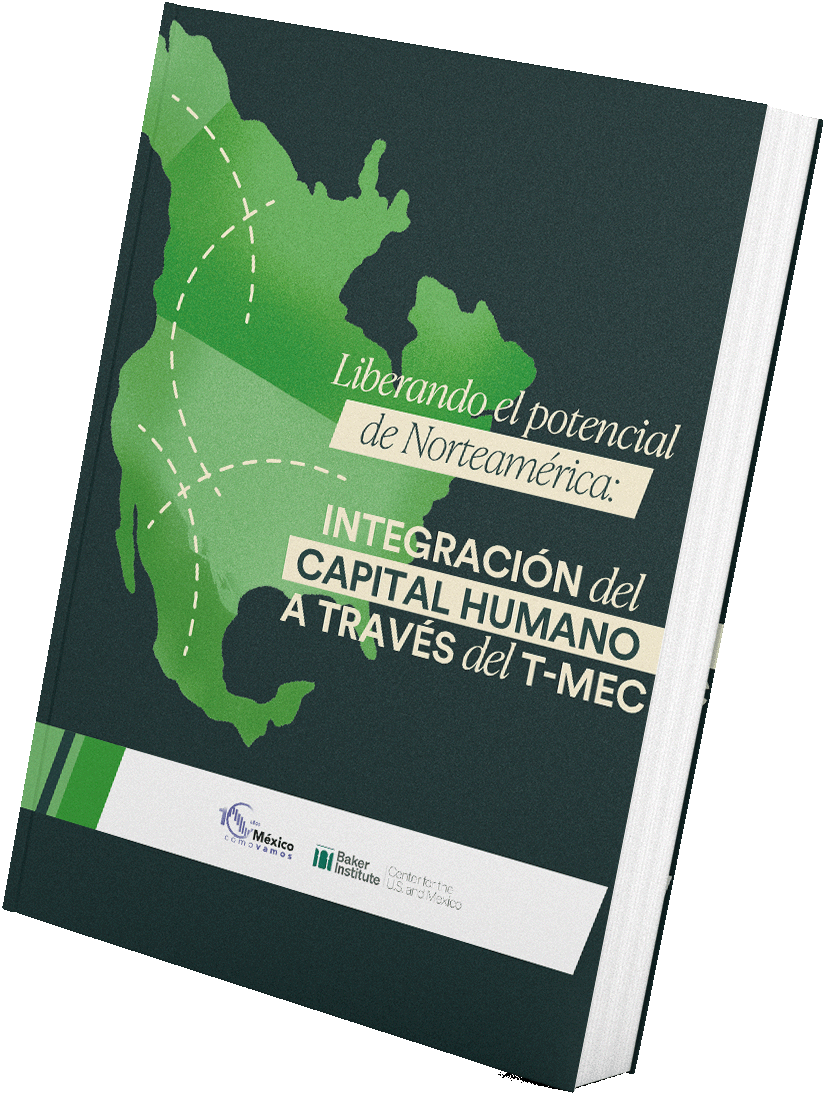

Missed the forum Immigration on the Road: Labor Mobility in North America?
Watch the replay here!
Check out our sites!
